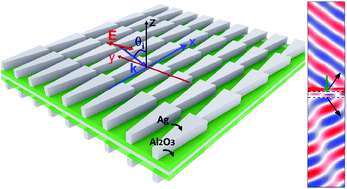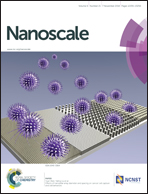Anomalous behavior of nearly-entire visible band manipulated with degenerated image dipole array†
Abstract
Recently, the control of anomalous light bending via flat gradient-phase metasurfaces has enabled many unprecedented applications. However, either low manipulation efficiency or challenging difficulties in fabrication hinders their practical applications, in particular in the visible range. Therefore, a concept of degenerated image dipole array is reported to realize anomalous light bending with high efficiency. A continuous phase delay varying rather than a discrete one, along with an in-plane wave vector is utilized to achieve anomalous light bending, by controlling and manipulating the mutual coupling between dipole array and the dipole array of its image. The anomalous light bending covers almost the entire visible range with broad incident angles, accompanied with preserved well-defined planar wavefront. In addition, this design is feasible to be fabricated with recent nanofabrication techniques due to its planarized surface configuration. The concept of imperfect image dipole array degenerated from ideal metamaterial absorbers surprisingly empowers significant enhancement in light manipulation efficiency for visible light in a distinct fashion.


 Please wait while we load your content...
Please wait while we load your content...